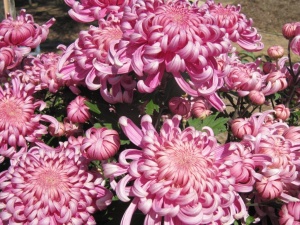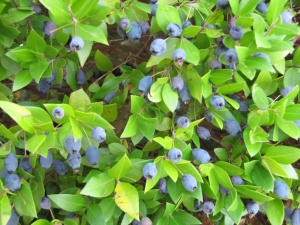CHRYSANTHEMUMS are always synonymous with Mother’s Day and autumn colour in the garden.

Chrysanthemums… easy to grow and can be divided into dozens of extra plants in late winter/spring for filling bare spots in the garden.
They have been cultivated in China since the 15th century, where by 1630 there were more than 500 cultivars recorded. More than 140 varieties have gained the Royal Horticultural Society’s prestigious Award of Garden Merit. Chrysanthemus tanacetum (syn. Pyrethrum tanacetum) is the source of the safe organic insecticide Pyrethrum. The flowers are pulverised to gain the active components called pyrethrins.
SALVIAS provide a real floral joy in the late summer and autumn garden. They seem never to stop flowering, even into winter. So when is it the best time to give them a haircut?
Lambley’s, the specialist perennial nursery advises: “Salvia ‘greggii’ and similar varieties are given a haircut in late autumn/early winter with the hedge shears.
“Reduce the plant by cutting off about a third or a little more, trimming into a rounded ball shape. Growth soon recommences in late spring and most are in flower by Christmas.”
ONE plant that always attracts interest in our garden is Myrtus communis or myrtle.
Originally from Sardinia and around the Mediterranean, it has a profusion of small white flowers in spring, but the main interest is at this time with its profusion of edible deep purple berries and leaves.The Italians make a wonderful liqueur from the berries and the leaves can be used as an alternative to bay leaves in casseroles or for covering roasting lamb for added flavour.
It has been suggested the shrub is prone to a rust, although there is no evidence of this in the ACT and I understand our cold winters fix this problem.
A REMINDER to anyone new to Canberra that it is illegal to burn autumn leaves (or any other matter) in gardens. Territory and Municipal Services also ask householders not to rake leaves off the lawns and nature strips on to the road to avoid blocking gutters and stormwater drains.
Rotting leaves provide great additional nutrients for the garden. If you do not have a compost heap, make a simple enclosure of chicken wire held in place with tomato stakes. Add a handful of blood and bone fertiliser and similarly garden lime to every few barrow loads of leaves. This will activate the rotting process.
In spring and summer the rotted material can be spread on garden beds as a mulch. Oak leaves are the highest in nitrogen content. I shred the leaves with the mower, half on to the compost heap and the rest directly on to garden beds.
The other alternative is to use a trash pack. Tom Ballard started this idea many years ago and Tom’s Trash Paks are now firmly part of many gardens. Call 6249 7834 for more information or tomstrashpaks.com.au
Jottings…
• Once leaves have fallen, remove low branches of trees that can be a hazard to head and eyes when mowing or working in garden beds. It will also allow more light to plants.
• After leaves fall spray fruit trees with Bordeaux or Kocide, not forgetting the ground under the trees. This is in addition to spring spraying for brown rot and other fungal diseases.
• Move frost-sensitive potted plants under cover.
• Last chance for planting spring bulbs without delay.
• Plant lilium bulbs now
• Plant primulas and polyanthus for winter colour now
The post Gardening: The colourful ‘mums of autumn appeared first on Canberra CityNews.
